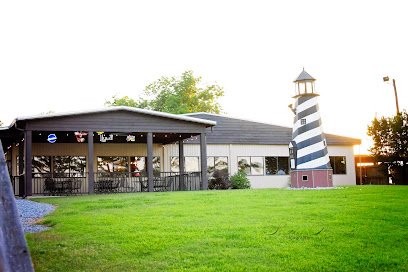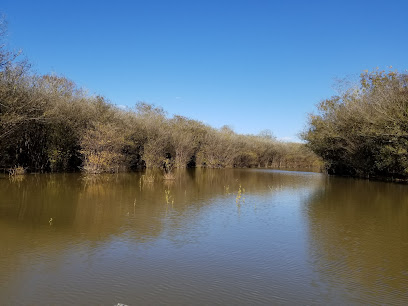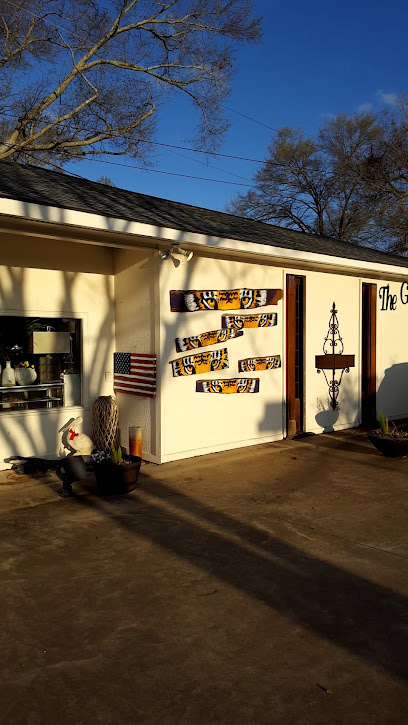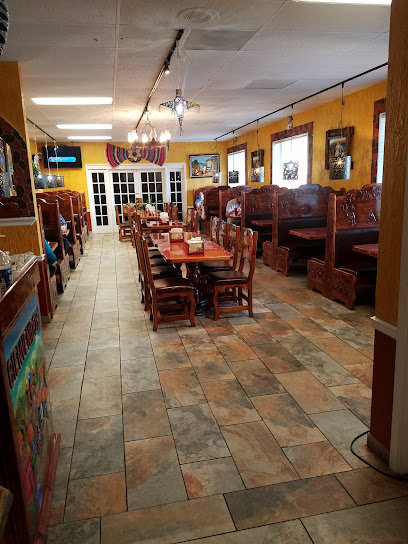
Catahoula National Wildlife Refuge: A Sanctuary of Natural Wonders
Discover the natural beauty and diverse wildlife of Catahoula National Wildlife Refuge, a haven for bird watchers, hikers, and outdoor enthusiasts in Louisiana.
Catahoula National Wildlife Refuge, located in the heart of Louisiana, is a pristine haven for nature lovers and wildlife enthusiasts. Encompassing over 25,000 acres, the refuge features a diverse landscape of forests, wetlands, and open water, making it a perfect spot for bird watching, hiking, and photography. This refuge is home to numerous species of birds, including migratory waterfowl that use the area as a stopover during their long journeys. The refuge offers a unique blend of activities that cater to all types of outdoor enthusiasts. From serene boat rides on the Catahoula Lake to guided nature walks that reveal the secrets of the swamp, there is always something to discover. Fishing is another popular activity, with the lake and its surrounding waters teeming with bass, crappie, and catfish. For those interested in hunting, the refuge provides opportunities for seasonal hunts, making it a year-round destination. Visitors can also explore the rich cultural history of the area. The refuge is situated near several historic sites and towns that offer a glimpse into the region's past. The local communities are known for their warm hospitality and vibrant traditions, adding an extra layer of charm to your visit. Whether you're an avid birder, a fisherman, or simply someone looking to escape the hustle and bustle of city life, Catahoula National Wildlife Refuge promises an unforgettable experience.
Local tips in Catahoula National Wildlife Refuge
- Visit during early mornings or late afternoons for the best wildlife viewing opportunities.
- Bring insect repellent, especially if you plan to hike or camp near the wetlands.
- Check the refuge's website for seasonal hunting and fishing regulations.
- Wear comfortable, waterproof footwear for exploring the swampy areas.
- Pack a picnic and enjoy the scenic views from one of the many designated picnic areas.
Catahoula National Wildlife Refuge: A Sanctuary of Natural Wonders
Catahoula National Wildlife Refuge, located in the heart of Louisiana, is a pristine haven for nature lovers and wildlife enthusiasts. Encompassing over 25,000 acres, the refuge features a diverse landscape of forests, wetlands, and open water, making it a perfect spot for bird watching, hiking, and photography. This refuge is home to numerous species of birds, including migratory waterfowl that use the area as a stopover during their long journeys. The refuge offers a unique blend of activities that cater to all types of outdoor enthusiasts. From serene boat rides on the Catahoula Lake to guided nature walks that reveal the secrets of the swamp, there is always something to discover. Fishing is another popular activity, with the lake and its surrounding waters teeming with bass, crappie, and catfish. For those interested in hunting, the refuge provides opportunities for seasonal hunts, making it a year-round destination. Visitors can also explore the rich cultural history of the area. The refuge is situated near several historic sites and towns that offer a glimpse into the region's past. The local communities are known for their warm hospitality and vibrant traditions, adding an extra layer of charm to your visit. Whether you're an avid birder, a fisherman, or simply someone looking to escape the hustle and bustle of city life, Catahoula National Wildlife Refuge promises an unforgettable experience.
When is the best time to go to Catahoula National Wildlife Refuge?
Unmissable attractions to see
Dewey Wills Wildlife Management
Explore the breathtaking Dewey Wills Wildlife Management, a wildlife refuge in Louisiana perfect for camping, hiking, and observing diverse ecosystems.

Archie Recreational Area
Explore the natural beauty and tranquility of Archie Recreational Area in Jonesville, Louisiana, a perfect retreat for nature lovers and families.

Catahoula National Wildlife Refuge Admin Building And Visitor Contact Station
Explore the breathtaking natural beauty and diverse wildlife of Catahoula National Wildlife Refuge in Louisiana, a perfect destination for nature lovers.

Bayou boy check out
Explore the breathtaking trails of Bayou Boy Check Out in Louisiana, where nature's beauty and adventure await every hiker.

Little Lake Observation Tower Trailhead
Discover the breathtaking views and rich wildlife at Little Lake Observation Tower Trailhead, a perfect hiking retreat in Louisiana's serene landscapes.

Little Lake Trailhead
Explore the tranquil beauty of Little Lake Trailhead in Louisiana's Catahoula National Wildlife Refuge, a perfect haven for hiking and nature lovers.

Essential places to dine
Pamela's Bayou In A Bowl
Experience authentic Southern cuisine at Pamela's Bayou In A Bowl in Alexandria; indulge in flavorful dishes that celebrate Louisiana's culinary heritage.

Tunk's Cypress Inn
Experience authentic Louisiana seafood at Tunk's Cypress Inn - where tradition meets flavor in a picturesque setting.

Catahoula’s
Discover the flavors of Louisiana at Catahoula’s – where every dish tells a story.

Jackie's Riverside Steak
Experience the best of Louisiana's culinary delights at Jackie's Riverside Steak - where fresh seafood meets expertly cooked steaks in a stunning riverside setting.

Duck's Nest II
Experience authentic Southern cuisine at Duck's Nest II in Ferriday—where every meal feels like home.

Stephens Heads or Tails Restaurant
Experience the best seafood in Marksville at Stephens Heads or Tails Restaurant - where Southern hospitality meets fresh flavors.

Sportsman Fish & Grill
Experience the taste of Louisiana at Sportsman Fish & Grill—where fresh seafood meets Southern hospitality.

Markets, malls and hidden boutiques
T Towne Truck Stop
Discover the heart of Louisiana travel at T Towne Truck Stop, where comfort, food, and camaraderie meet on the road.

Catahoula National Wildlife Refuge
Explore the stunning landscapes and vibrant wildlife at Catahoula National Wildlife Refuge, an idyllic getaway in Louisiana for nature lovers and outdoor enthusiasts.

The Southern Wearhouse
Discover unique Southern fashion and custom apparel at The Southern Wearhouse in Jena, Louisiana - a shopper's paradise for tourists!

Caboose Boutique & Gift Shop
Explore Caboose Boutique & Gift Shop in Jena, LA for unique gifts, stylish clothing, and a taste of local culture in a charming atmosphere.

Shell
Conveniently located Shell station in Jonesville, LA, offering fuel, snacks, and quick meals for busy travelers on the go.

Factory Connection
Explore Factory Connection in Jonesville, LA: Your one-stop shop for trendy clothing, fashion accessories, and home goods at unbeatable prices.

Home Hardware Center
Explore the Home Hardware Center in Jonesville, LA for all your DIY needs—building materials, garden supplies, and expert advice await!

Blue Sparrow Bridal Co.
Explore the enchanting bridal experience at Blue Sparrow Bridal Co. in Jena, Louisiana, where elegance and personalized service combine for the perfect wedding gown.

Whitehall Mall
Explore Whitehall Mall in Jena, LA for a convenient shopping experience with friendly service and essential supplies for all your travel needs.

Gift Box
Explore unique local gifts and handcrafted treasures at Gift Box in Ferriday, LA, the perfect stop for tourists seeking authentic souvenirs.

Initially Blessed
Discover unique gifts and local treasures at Initially Blessed, a charming gift shop in Jena, Louisiana, perfect for tourists seeking special souvenirs.

Simply Unique
Discover Simply Unique in Jonesville, Louisiana, where exceptional gifts and floral arrangements await to make your visit unforgettable.

Honey Brake Gun Club & Pro Shop
Discover the ultimate shooting experience at Honey Brake Gun Club & Pro Shop, where expert staff and challenging courses await.

Rae Rae's Gifts
Explore Rae Rae's Gifts in Jena, Louisiana, for unique handcrafted treasures and a taste of local culture.

SewBlessedFarm
Explore creativity at SewBlessedFarm, a premier sewing and embroidery shop in Jonesville, Louisiana, offering unique fabrics and workshops for all skill levels.

Essential bars & hidden hideouts
Selina Catahoula New Orleans
Discover the unique blend of comfort and creativity at Selina Catahoula New Orleans, where vibrant culture meets modern hospitality.

McDonald's
Experience the classic American fast food dining at McDonald's in Jena, Louisiana, offering delicious burgers, breakfast, and coffee.

La Cabana Mexican Restaurant
Discover authentic Mexican flavors in Jena, Louisiana, at La Cabana Mexican Restaurant, where every meal is a fiesta.

Brisket House
Discover the authentic taste of Southern barbecue at Brisket House in Jena, Louisiana, where smoky flavors and warm hospitality unite.

Dewey Wills Wildlife Management
Discover the natural beauty and wildlife of Dewey Wills Wildlife Management Area, a tranquil haven for outdoor enthusiasts in Louisiana.

Sonic Drive-In
Discover Sonic Drive-In in Jena, Louisiana – a fast food paradise with delicious burgers, shakes, and a nostalgic drive-in experience.

Mitch's Restaurant-Drive Thru
Experience the best of American comfort food at Mitch's Restaurant in Jena, Louisiana, where delicious meals and friendly service await.

Big John's Burgers
Discover Big John's Burgers in Jonesville, Louisiana: a haven for burger lovers seeking delicious flavors and friendly vibes.

Popeyes Louisiana Kitchen
Experience the taste of Louisiana at Popeyes Louisiana Kitchen, where spicy chicken and Cajun flavors await.

Subway
Experience fresh and customizable sandwiches at Subway in Jena, a perfect stop for travelers seeking quick and satisfying meals in Louisiana.

Crave Cupcakery & Coffee Bar
Explore the sweet side of Jena, Louisiana, at Crave Cupcakery & Coffee Bar, where delectable cupcakes and gourmet coffee await.

Red's Levee Bar
Discover the lively atmosphere of Red's Levee Bar in St. Martinville, where affordable drinks and friendly faces await to enhance your Louisiana adventure.

Miss B's Place Cafe & Gifts
Discover the heart of Louisiana at Miss B's Place Cafe & Gifts—where Southern cuisine meets charming local gifts.

J J's Fish House Inc
Experience the best of Louisiana seafood at J J's Fish House Inc, where fresh flavors and Southern hospitality meet.

Bowen's Bbq and Burgers
Experience the authentic taste of southern barbecue at Bowen's BBQ and Burgers, where every meal is a flavorful journey through Louisiana's culinary traditions.

Local Phrases about Catahoula National Wildlife Refuge
-
- HelloHowdy
[hah-dee] - GoodbyeAdios
[ah-dee-ohs] - YesYa
[yah] - NoNon
[nawn] - Please/You're welcomePlease/You're welcome
[Please/You're welcome] - Thank youMerci
[mare-see] - Excuse me/SorryPardon
[par-dawn] - How are you?Comment ça va?
[kom-mawn sah vah] - Fine. And you?Bien. Et toi?
[bee-en. ay twah] - Do you speak English?Tu parles anglais?
[too pahr-layz ahn-glay] - I don't understandJe ne comprends pas
[zhuh nuh kohm-prawn pah]
- HelloHowdy
-
- I'd like to see the menu, pleaseJe voudrais voir le menu, s'il vous plaît
[zhuh voo-dray vwar luh men-yoo, see voo pleh] - I don't eat meatJe ne mange pas de viande
[zhuh nuh mahnj pah duh vee-ahnd] - Cheers!Santé!
[sahn-tay] - I would like to pay, pleaseJe voudrais payer, s'il vous plaît
[zhuh voo-dray pay-ay, see voo pleh]
- I'd like to see the menu, pleaseJe voudrais voir le menu, s'il vous plaît
-
- Help!Au secours!
[oh suh-coor] - Go away!Allez-vous en!
[ah-lay vooz ahn] - Call the Police!Appelez la police!
[ah-pay-lay lah poh-leece] - Call a doctor!Appelez un médecin!
[ah-pay-lay ung may-day-sahn] - I'm lostJe suis perdu
[zhuh swee pair-doo] - I'm illJe suis malade
[zhuh swee mah-lahd]
- Help!Au secours!
-
- I'd like to buy...Je voudrais acheter...
[zhuh voo-drayz ah-shay-tay...] - I'm just lookingJe regarde juste
[zhuh ruh-gard zhust] - How much is it?Combien ça coûte?
[kohm-byen sah koot] - That's too expensiveC'est trop cher
[say troh shay] - Can you lower the price?Pouvez-vous baisser le prix?
[poo-vay voo bay-say luh pree]
- I'd like to buy...Je voudrais acheter...
-
- What time is it?Quelle heure est-il?
[kell ur ay eel] - It's one o'clockIl est une heure
[eel ay oon ur] - Half past (10)Dix heures et demi
[dees urz ay dem-ee] - MorningMatin
[mah-tan] - AfternoonAprès-midi
[ah-pray mee-dee] - EveningSoir
[swah] - YesterdayHier
[ee-air] - TodayAujourd'hui
[oh-zhoor dew-ee] - TomorrowDemain
[duh-mahn] - 1Un
[un] - 2Deux
[duh] - 3Trois
[twah] - 4Quatre
[kat] - 5Cinq
[sank] - 6Six
[sees] - 7Sept
[set] - 8Huit
[weet] - 9Neuf
[nurf] - 10Dix
[dees]
- What time is it?Quelle heure est-il?
-
- Where's a/the...?Où est...?
[oo ay...] - What's the address?Quelle est l'adresse?
[kell ay la-dress] - Can you show me (on the map)?Pouvez-vous me montrer (sur la carte)?
[poo-vay voo muh mohn-tray (sir lah kart)] - When's the next (bus)?Quand est le prochain (bus)?
[kawn ay luh proh-shahn (bus)] - A ticket (to ....)Un billet (pour ...)
[un bee-yay (poor ...)]
- Where's a/the...?Où est...?
History of Catahoula National Wildlife Refuge
-
Long before European settlers arrived, the region that is now Catahoula National Wildlife Refuge was home to various Native American tribes, including the Caddo and Choctaw. These indigenous peoples thrived in the rich wetlands, utilizing the abundant wildlife and natural resources for sustenance, trade, and cultural activities. Artifacts and remnants of their presence, such as pottery shards, tools, and ceremonial objects, have been discovered in the area, providing a window into their vibrant way of life.
-
In the 18th century, the area was influenced by both French and Spanish colonial powers. French settlers were among the first Europeans to explore and trade in the region, with the Spanish establishing control later. This period saw the development of trade routes and the establishment of settlements, leaving a lasting impact on the local culture and place names. The influence of these colonial powers can still be felt in the region’s architecture and cultural traditions.
-
During the Antebellum period, the area around Catahoula National Wildlife Refuge saw significant agricultural development, particularly with the cultivation of cotton and sugarcane. Plantation life flourished, and the landscape was transformed by the construction of levees and other infrastructure to support large-scale farming. The legacy of this era is evident in the historic plantations and homes that dot the region, some of which have been preserved as part of Louisiana’s rich historical tapestry.
-
The Civil War had a profound impact on the region, with the landscape of Catahoula National Wildlife Refuge witnessing skirmishes and troop movements. The war disrupted the local economy and led to significant social changes. Post-war, the area saw a period of Reconstruction, which brought about both challenges and opportunities for the local population. The history of this tumultuous period is preserved in local archives and historical markers throughout the region.
-
Catahoula National Wildlife Refuge was established in 1958 to preserve and protect the unique wetland ecosystem and the diverse wildlife it supports. The refuge encompasses over 25,000 acres of bottomland hardwoods, swamps, and open water, making it a vital habitat for migratory birds, waterfowl, and a variety of other species. The establishment of the refuge marked a significant step in conservation efforts in Louisiana, providing a sanctuary for wildlife and a place for public enjoyment and education.
-
Today, Catahoula National Wildlife Refuge is a testament to ongoing conservation efforts. The refuge is managed to maintain and enhance the habitat for wildlife, including endangered and threatened species. Various projects aimed at wetland restoration, invasive species control, and sustainable land management are ongoing. The refuge also serves as a crucial site for scientific research and environmental education, fostering a deeper understanding and appreciation of the natural world.
Catahoula National Wildlife Refuge Essentials
-
Catahoula National Wildlife Refuge is located in east-central Louisiana. The nearest major airport is Alexandria International Airport (AEX), approximately 60 miles away. From Alexandria, you can rent a car or take a taxi to the refuge. The drive typically takes around 1.5 hours. Alternatively, you can reach the refuge by driving from New Orleans or Baton Rouge, both of which are around 3-4 hours away by car.
-
To explore Catahoula National Wildlife Refuge, a rental car is the most convenient option. The refuge covers a vast area, and having a car allows you to visit different parts of the refuge at your own pace. There are no public transportation options directly to or within the refuge, so plan accordingly. Local taxis and rideshare services are available in nearby towns but might not be the most reliable for such a remote destination.
-
The currency used in Louisiana is the United States Dollar (USD). Credit cards are widely accepted at hotels, restaurants, and shops in nearby towns. However, it is advisable to carry some cash, especially for entry fees to the refuge or small purchases at local stores. ATMs are available in nearby towns such as Jonesville and Jena, so make sure to withdraw sufficient cash before heading into the more remote areas of the refuge.
-
Catahoula National Wildlife Refuge is generally safe for visitors. However, standard safety precautions should be taken. Avoid leaving valuables in your car and keep an eye on your belongings. The area is remote, so always inform someone of your plans and expected return time. There are no specific high-crime areas targeting tourists, but it is essential to stay vigilant. Be cautious of wildlife and follow guidelines to avoid dangerous encounters.
-
In case of an emergency, dial 911 for immediate assistance. The nearest medical facilities are in Jonesville, which is about 20 miles from the refuge. It is advisable to have travel insurance that covers medical emergencies. For minor health issues, there are pharmacies in nearby towns where you can purchase over-the-counter medications. Always carry a basic first-aid kit when exploring remote areas of the refuge.
-
Fashion: Do wear comfortable and weather-appropriate clothing, including sturdy shoes for walking. Avoid wearing flashy or expensive jewelry. Religion: Do be respectful of local customs and traditions, though the area is not particularly religious. Public Transport: There is no public transport within the refuge, so plan to drive. Greetings: Do greet people with a friendly hello or a wave. Locals are generally friendly and welcoming. Eating & Drinking: Do bring your own food and water, as there are limited facilities within the refuge. Don’t litter; always dispose of your trash properly.
-
To experience Catahoula National Wildlife Refuge like a local, consider visiting during the early morning or late afternoon when wildlife is most active. Bring binoculars for bird watching and a camera to capture the beautiful landscapes. Engage with local rangers, who can provide valuable insights and tips for your visit. Don't miss the opportunity to explore the nearby Catahoula Lake, known for its unique geological features and rich biodiversity.
Nearby Cities to Catahoula National Wildlife Refuge
-
Things To Do in Monroe
-
Things To Do in Vicksburg
-
Things To Do in Baton Rouge
-
Things To Do in McComb
-
Things To Do in Lafayette
-
Things To Do in Shreveport
-
Things To Do in Lake Charles
-
Things To Do in Houma
-
Things To Do in Hattiesburg
-
Things To Do in Slidell
-
Things To Do in New Orleans
-
Things To Do in Beaumont
-
Things To Do in Port Arthur
-
Things To Do in Greenwood
-
Things To Do in Longview







